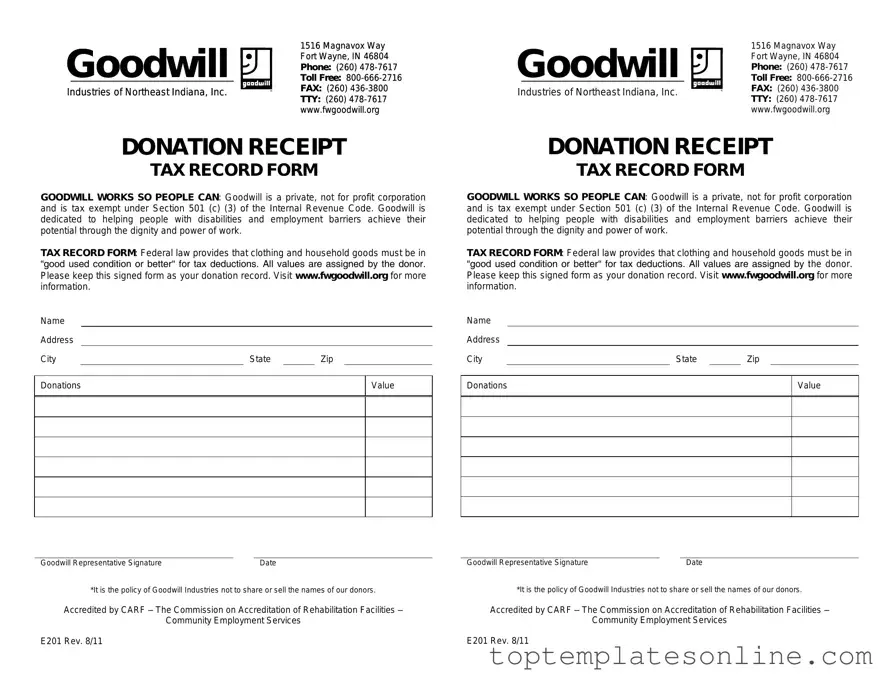When individuals choose to donate items to Goodwill, they not only contribute to their community but also create opportunities for themselves when it comes to tax deductions. The Goodwill donation receipt form plays a crucial role in this process. This form serves as a record of the items donated, providing both the donor and Goodwill with essential information. It typically includes the donor's name, address, and a detailed list of the donated items, along with their estimated values. The form is designed to be user-friendly, allowing donors to easily fill it out and retain a copy for their records. It is important to note that while Goodwill provides a general guideline for valuing items, the final determination of value rests with the donor. This form not only facilitates the donation process but also ensures that individuals can substantiate their charitable contributions when filing their taxes. Understanding the significance of the Goodwill donation receipt form can empower donors to make informed decisions and maximize the benefits of their generous acts.
